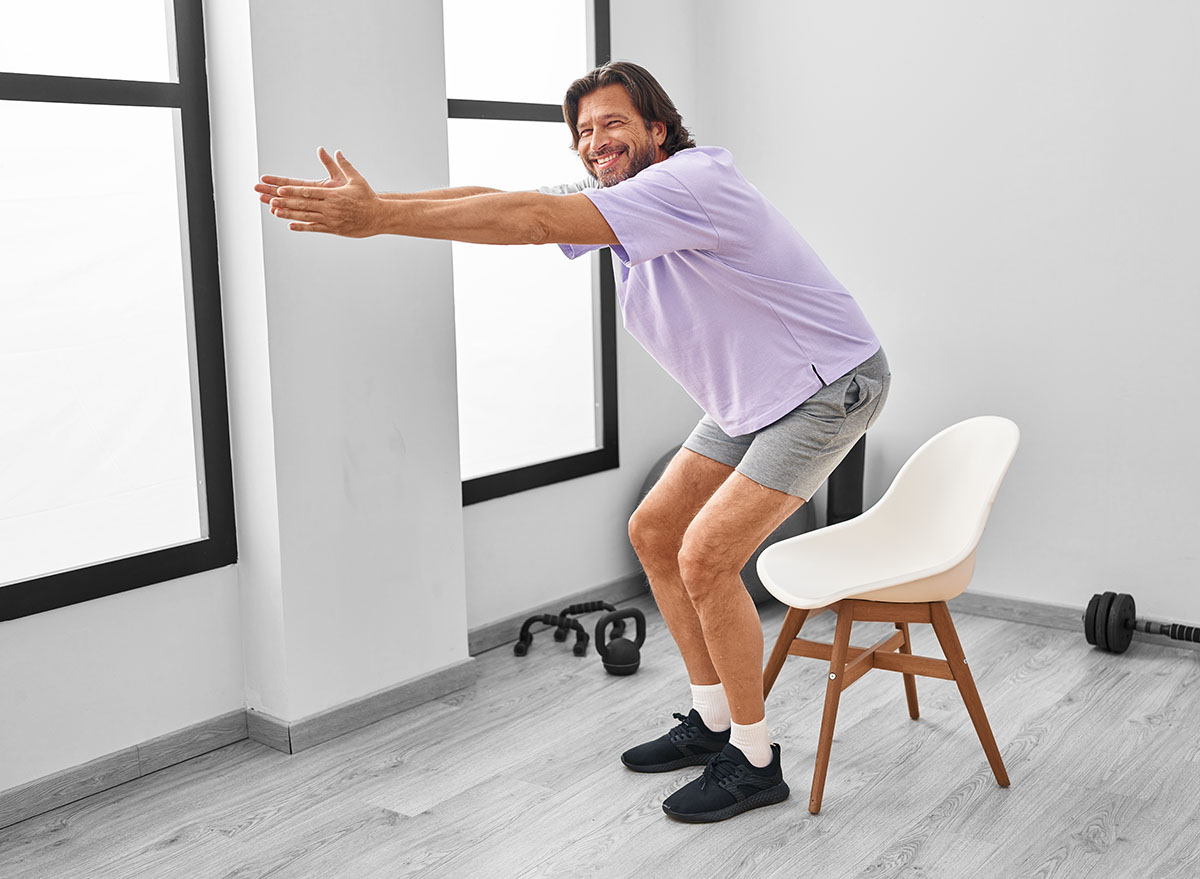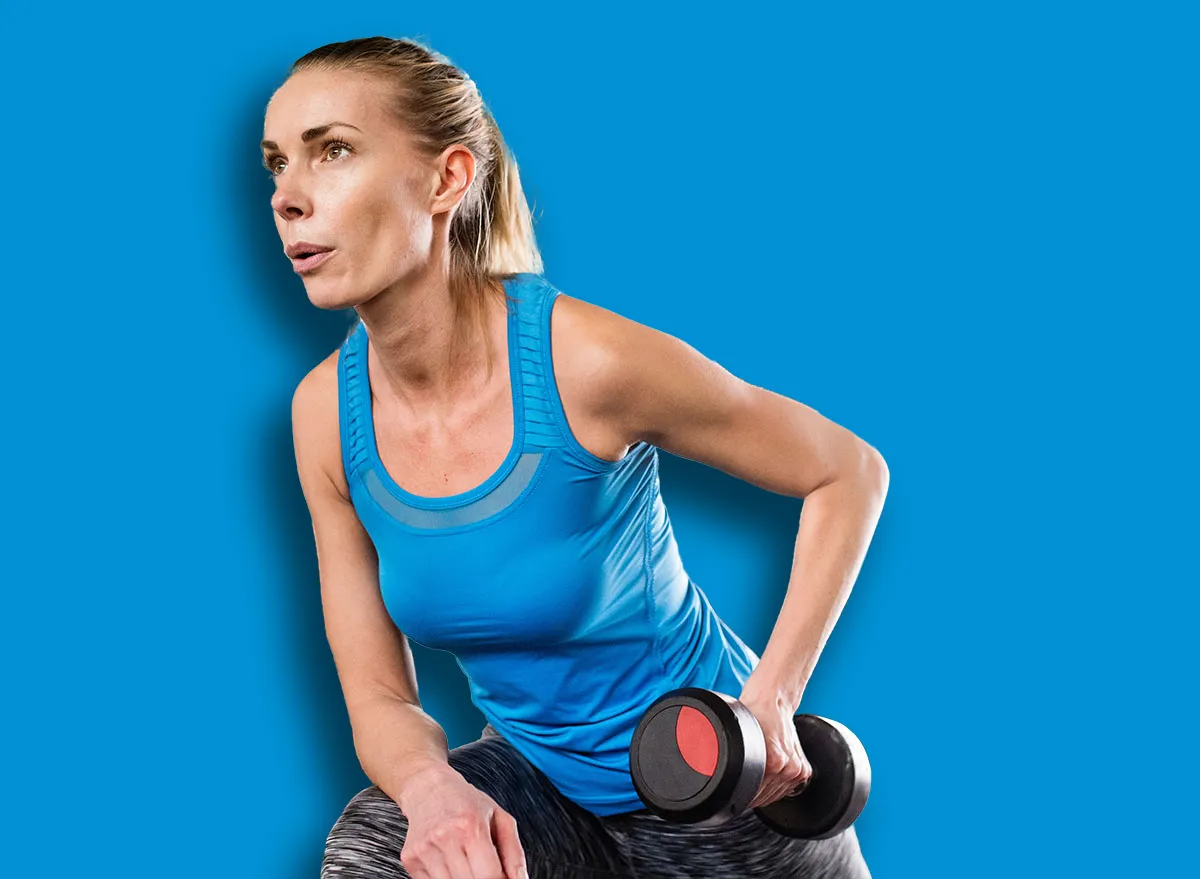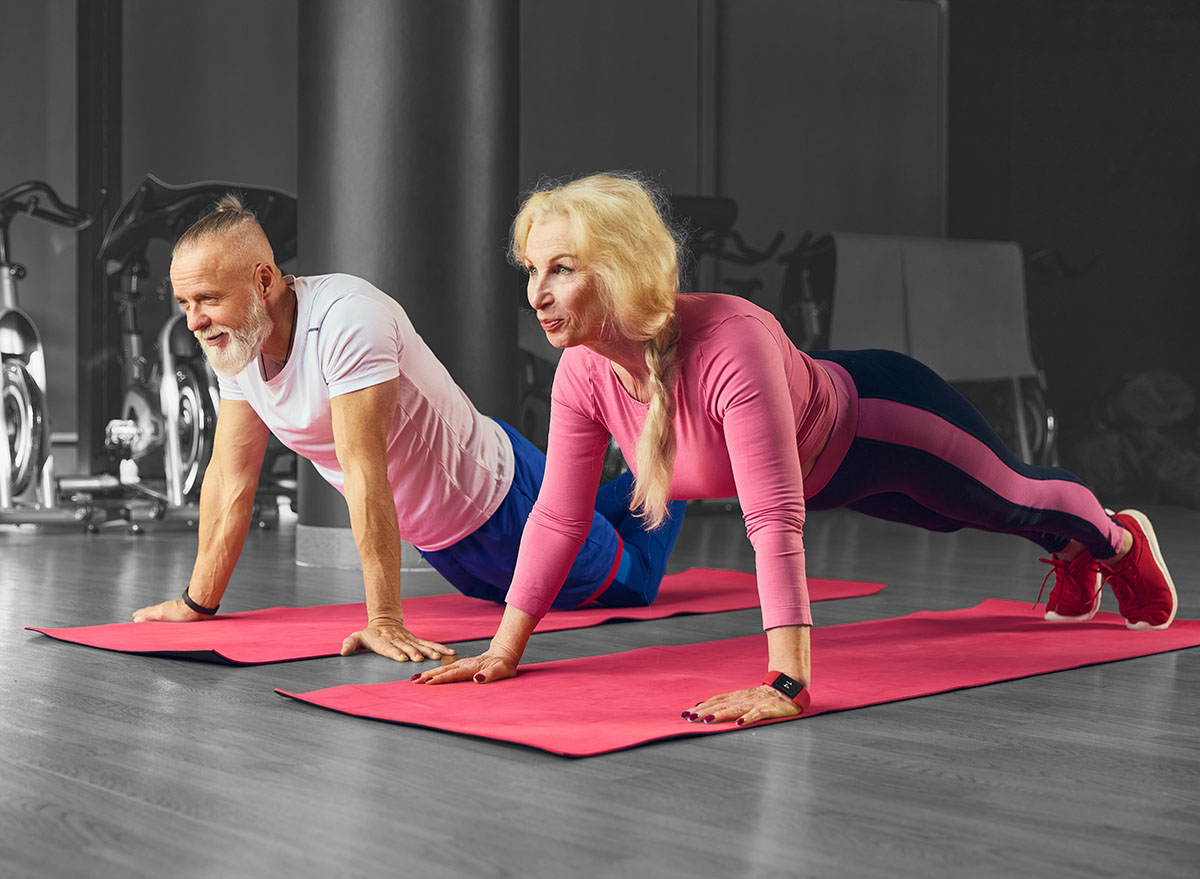Who knew your favorite piece of furniture could double as a full-body gym? The same chair you use for morning coffee or scrolling through emails can help you build more functional strength than half an hour of weights: no treadmill, no machines, and no “gym face” required.
The secret sauce to building strength as we age is how smart you choose to move. Chair-based workouts recruit your stabilizers, engage your core, and train the muscles that actually keep you moving well as you age. Each exercise helps you build balance, coordination, and control, which means you’ll walk taller, move more easily, and feel stronger doing everyday things. And if time is of the essence, you can knock this out in less time than it takes to find a matching pair of socks. Eight minutes is all it takes to turn an ordinary chair into the most effective training tool in your house.
So grab a seat, literally, and get ready for a routine that proves strength after 50 doesn’t have to come from the weight room.
The 8-Minute Chair Strength Routine


What you need: A sturdy chair (without wheels), a light or medium pair of dumbbells (optional), and a small open space. This quick routine takes just eight minutes from start to finish.
The Routine:
- Sit-to-Stand Squats (45 seconds, 15-second rest)
- Seated Shoulder Press (45 seconds, 15-second rest)
- Alternating Step-Back Lunges with Chair Support (45 seconds, 15-second rest)
- Seated Knee Extensions and Core Crunch (45 seconds, 15-second rest)
Repeat for two rounds.
Directions: Set a timer for 45 seconds of work and 15 seconds of rest per move. Perform each exercise smoothly with control and focus. Keep your posture tall, core tight, and breathing steady. Complete all four moves, rest 60 seconds, then repeat the circuit. Read on for the detailed instructions.
Sit-to-Stand Squats
This move mimics one of the most functional patterns you use daily—standing up and sitting down. It strengthens your glutes, quads, and hamstrings while improving balance and lower-body power. Over time, this builds the strength you need for daily activities like climbing stairs or getting out of a car with ease.
How to do it:
- Sit near the edge of the chair with feet shoulder-width apart.
- Keep your chest tall and arms crossed in front or extended forward for balance.
- Drive your heels into the ground to stand up tall.
- Lower slowly back down until your hips touch the chair, keeping control.
- Repeat for time.
Best Variations:
- Hold a dumbbell in a goblet-style for added resistance.
- Perform a “hover squat” by stopping just above the seat before standing again.
Seated Shoulder Press
Your shoulders and arms play a significant role in everyday movement. Seated shoulder presses build upper-body strength and stability while reinforcing proper posture. Training from a seated position does a fantastic job of isolating your shoulders and forcing your core to stabilize your torso.
How to do it:
- Sit tall with your feet flat and a dumbbell in each hand at shoulder height.
- Brace your core and press both weights straight overhead.
- Lower the weights with control until your elbows are at shoulder level.
- Keep your spine tall and avoid leaning back.
- Continue for the full interval.
Best Variations:
- Use one arm at a time to increase core engagement.
- Try a resistance band if dumbbells feel too heavy or uncomfortable.
Alternating Step-Back Lunges with Chair Support
This move builds balance, coordination, and lower-body strength without stressing your joints. Using the chair for support allows you to work safely while still training key stabilizing muscles through a full range of motion.
How to do it:
- Stand behind the chair and hold the backrest lightly for balance.
- Step your right foot back into a lunge, bending both knees to about 90 degrees.
- Drive through your front heel to return to standing.
- Switch legs and repeat, alternating sides.
- Maintain an upright posture and tight core throughout.
Best Variations:
- Add dumbbells to each hand for extra resistance.
- Turn this into a reverse lunge-to-knee drive for a balance challenge.
Seated Knee Tucks
Seated knee tucks target both your legs and core in one move. Strengthening your quadriceps helps protect your knees and improve mobility, while engaging your abs enhances stability and posture.
How to do it:
- Sit tall, gripping the sides of the chair.
- Extend both legs straight out in front of you.
- Pull your knees toward your chest in a controlled crunch.
- Straighten your legs again without letting your feet touch the floor.
- Keep your abs tight and controlled throughout.
Best Variations:
- Perform single-leg knee extensions to isolate each side.
- Add light ankle weights for extra resistance.
Best Tips for Staying Strong and Energized After 50


Building strength after 50 doesn’t require long workouts; it requires consistent effort. Short routines like this can spark significant results when paired with solid habits that support recovery and energy.
- Stay consistent: Aim for this routine three to five times per week. Consistency builds more strength than intensity alone.
- Engage your core all day: Keep your abs active while sitting, standing, or walking to reinforce your posture.
- Add variety to your movement: Mix in walking, light resistance training, and stretching throughout the week.
- Prioritize rest and recovery: Quality sleep and mobility work keep your joints healthy and muscles fresh.
- Fuel your body well: Focus on protein-rich meals and hydration to support muscle repair and lasting energy.














Leave a Reply